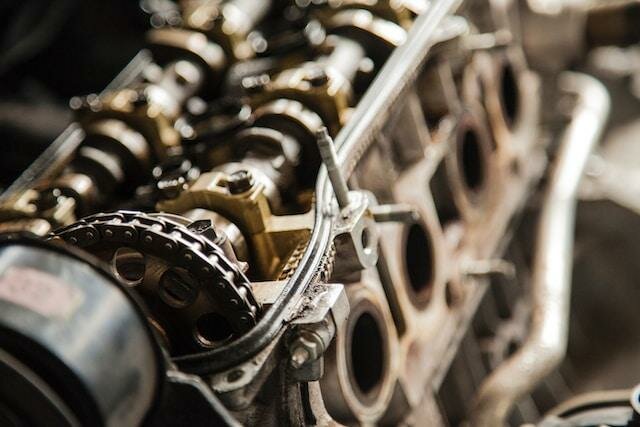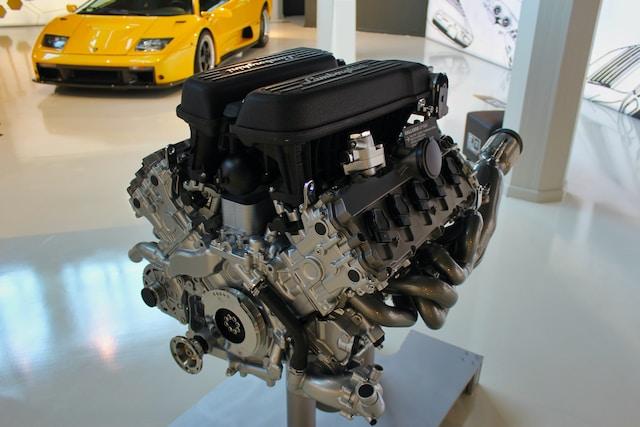What is a Car Timing Chain?
Published Date: 14th Jun 2023
 A car timing chain is a long, metal chain that keeps the engine's camshafts and crankshaft in sync. The camshafts control the opening and closing of the engine's valves, while the crankshaft converts the up-and-down motion of the pistons into rotational motion that powers the wheels. The timing chain ensures these two components are always in sync so the engine can run smoothly and efficiently.
A car timing chain is a long, metal chain that keeps the engine's camshafts and crankshaft in sync. The camshafts control the opening and closing of the engine's valves, while the crankshaft converts the up-and-down motion of the pistons into rotational motion that powers the wheels. The timing chain ensures these two components are always in sync so the engine can run smoothly and efficiently.
- The crankshaft drives the timing chain.
- The timing chain drives the camshafts.
- The camshafts open and close the engine's valves.
- The valves allow air and fuel into the engine and exhaust gases out of the engine.
- The spark plugs ignite the air and fuel, and the resulting explosion forces the pistons down.
- The pistons turn the crankshaft, which rotates the wheels.
The engine is a complex machine in which each part plays a crucial role. Among them, the timing chain is of utmost importance. This tiny component needs proper care and maintenance, as a broken timing chain is capable of causing severe harm to the engine. Therefore, make it a point to have your engine's timing chain inspected and replaced regularly, per the manufacturer's recommendations.
How Does a Car Timing Chain Work?
 A car's timing chain is a lengthy metal chain that synchronises the motion of various engine parts, such as the pistons and valves. It is situated in the engine's crankcase and connected to vital components like the crankshaft and camshaft.
A car's timing chain is a lengthy metal chain that synchronises the motion of various engine parts, such as the pistons and valves. It is situated in the engine's crankcase and connected to vital components like the crankshaft and camshaft.
The engine's pistons turn the crankshaft and the timing chain, which, in turn, rotates the camshaft. The camshaft is responsible for opening and closing the engine's valves, through which the air-fuel mixture enters and exits the cylinders. The timing chain plays a crucial role in this process, as it synchronises the rotation of these integral components.
A critical engine component, the timing chain ensures its smooth operation. However, if it breaks or becomes loose, several issues may arise, including misfiring, power loss, or complete engine shutdown.
Here are some of the most common problems with car timing chains:
- Stretching: Over time, the timing chain can stretch, which can cause it to become loose and cause problems with the engine's timing.
- Sagging: The timing chain can sag if it is not correctly lubricated, which can also cause problems with the engine's timing.
- Breaking: Inadequate upkeep of a timing chain can result in engine failure, causing significant damage. Thus, timely maintenance is critical to prevent such mishaps.
If you suspect that your car's timing chain may be a problem, it is essential to have it checked by a qualified mechanic. A timing chain replacement is a significant repair but much less expensive than replacing the entire engine.
Here are some tips for keeping your car's timing chain in good condition:
 Have the timing chain checked regularly: Most mechanics recommend having the timing chain checked every 30,000 to 60,000 miles.
Have the timing chain checked regularly: Most mechanics recommend having the timing chain checked every 30,000 to 60,000 miles.- Use the correct oil: Proper lubrication with the recommended oil type is crucial for the timing chain. Be sure to check your owner's manual for specifics.
- Avoid driving in extreme conditions: Driving in extreme conditions, such as very hot or very cold weather, can put extra stress on the timing chain.
- Be gentle on the throttle: Abruptly accelerating and decelerating can put extra stress on the timing chain.
By following these tips, you can help to keep your car's timing chain in good condition and extend the life of your engine.
Why Is a Car Timing Chain Important?
A timing chain is an internal engine component that synchronises the rotation of the camshaft and the crankshaft. The camshaft controls the opening and closing of the engine's valves, while the crankshaft converts the up-and-down motion of the pistons into a rotary motion that powers the wheels. The timing chain ensures that these two components are always in sync, which is essential for the smooth and efficient running of the engine.
If the timing chain breaks, it can cause severe damage to the engine. The valves can no longer open and close properly, leading to pistons crashing into valves and destroying the engine. Sometimes, a broken timing chain can cause the engine to seize up completely.
 Timing chains are typically made of steel or composite material and designed to last for the engine's life. However, they can wear out over time, especially if the engine is not maintained correctly. Symptoms of a worn timing chain include:
Timing chains are typically made of steel or composite material and designed to last for the engine's life. However, they can wear out over time, especially if the engine is not maintained correctly. Symptoms of a worn timing chain include:
- Engine misfires
- Rough idling
- Loss of power
- Increased noise from the engine
- Engine oil leaks
If you notice any of these symptoms, having your car checked by a mechanic as soon as possible is important. A timing chain replacement is a relatively expensive repair but much cheaper than replacing an engine.
How Often Should a Car Timing Chain Be Replaced?
The general guideline is that timing chains should be replaced every 80,000 to 120,000 miles, with variations depending on your car's make and model and typical driving conditions. Areas with extreme weather conditions may necessitate more frequent timing chain replacement.
Here are some signs that your car's timing Chain may need to be replaced:
- Engine misfires
- Engine noise
- Engine overheating
- Loss of power
- Reduced fuel economy
If you notice any of these signs, having your car's timing chain checked by a mechanic as soon as possible is important.
How to Prolong the Life of Your Car's timing chain
In addition to regular replacement, there are a few things you can do to help extend the life of your timing chain. These include:

- Changing the oil and oil filter regularly
- Keeping the engine lubricated
- Avoiding driving in harsh conditions
- Having the timing chain routinely inspected by a qualified mechanic
- By following these simple tips, you can help ensure that your timing chain lasts for the life of your car.
By following these tips, you can help to keep your car's timing chain running smoothly and prevent costly repairs.
Timing chains are a reliable and durable alternative to timing belts. They are less likely to break or stretch, which can lead to costly engine damage. Timing chains are also easier to service than timing belts and can last for the engine's life.
A timing chain is a good option if you are looking for a reliable and long-lasting timing system. They are more expensive than timing belts upfront, but they can save you money in the long run.
Here are some of the advantages of timing chains over timing belts:
- Longer lifespan: Timing chains can last for the engine's life, while timing belts typically need to be replaced every 60,000 to 100,000 miles.
- Less maintenance: Timing chains are self-lubricating, so they don't need to be checked or adjusted as often as timing belts.
- More durable: Timing chains are less likely to break or stretch than timing belts, which can lead to costly engine damage.
If you are considering buying a new car or planning to service your car's timing system, ask your mechanic about the benefits of timing chains.
Looking to buy a new car? Find Amazing New Car Deals Here
Discover your perfect car with the guidance of our team of expert sales professionals. From start to finish, we'll work with you to find the ideal vehicle to match your needs. Contact UK Car Discount today and explore our wide selection of premier vehicles.
Call us today at 0161 946 3500 to discuss how we can guide you with your next Next New Car.
READ THE LATEST NEW CAR JARGON ARTICLES HERE
